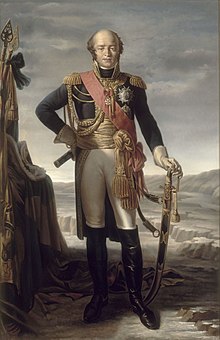Battle Of Lambach
Background

After surrounding and defeating an Austrian army at Ulm in October 1805, Napoleon's army, supported by the Bavarian Army, marched to the east. On 30 October (or 31, depending on how you look at the campaign), Beaumont's vanguard engaged and defeated a minor Austrian force in the battle of Mehrnbach (also called battle of Ried).
Battle
Not long after Beaumont reached the fortified Russian positions. None of the opposing sides actually wanted to fight (the Russians had 4 jäger battalions, some hussars, and a few horse artillery cannons, while the French had 3 cavalry regiments and 2 infantry regiments). Therefore, this part of the battle was limited to a small fight and firefight over a village near the Russian positions.
The Austrians, under Major General Schustekh, wanted to cross the Traun river and unite with the main army under Kutusov. His rearguard was pushed back by the French, and soon the fighting came to the bridge over the river. Though the Austrians set fire on it, the French crossed the river by boat a while later.
At Lambach the French lost around 50 men, the Russians 148 men and 1 cannon. The Austrians lost around 400 men.
Aftermath
The battle of Lambach was a part of several Austrian and Russian attempts to slow down the French advance, to give Kutusov's army time to retreat. Though these battles were mostly defeats, they gave time to Kutusov's army, so they could retreat. On 13 November French troops entered Vienna without a shot being fired. On 2 December the Austro-Russian army was defeated at Austerlitz. A few days later the war of the Third Coalition was over.
Notes
- ^ Smith 1998, p. 210.
References
- Smith, Digby (1998). The Napoleonic Wars Data Book. Greenhill.
External links
 Media related to Battle of Lambach at Wikimedia Commons
Media related to Battle of Lambach at Wikimedia Commons